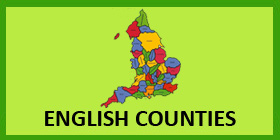




Back to the Houses Of Lancaster And York calendar



 Henry V didnít start off much better than
his dad. Since about the 1380s a man called John Wyclif had been preaching a slightly different form of worship from that practised by the church. Well, actually
he stopped in 1384 due to his unfortunate death but his followers, called Lollards, continued to follow his teachings.
Henry V didnít start off much better than
his dad. Since about the 1380s a man called John Wyclif had been preaching a slightly different form of worship from that practised by the church. Well, actually
he stopped in 1384 due to his unfortunate death but his followers, called Lollards, continued to follow his teachings.
Richard II had put up with them but Henry IV had begun to arrest and indeed execute them. In these days execution often took the form of being burned
tied to a stake, thatís a post not a piece of meat which is spelt steak. English as well as Maths; wow!
Shortly after becoming King, Henry V took even greater action. One of the Lollard leaders was a guy called Sir John Oldcastle who had fought alongside
Henry a few times. Oldcastle was arrested and sent to the Tower of London and his execution was ordered. He was accused of being a heretic which means someone who
does not believe in the same things as the established believers.
Henry got involved and said Oldcastle, who had once been a friend, could have 40 days to change his mind. Oldcastle decided he couldnít think properly
under arrest in the Tower, so he escaped. More Lollards were then arrested while Oldcastle began to plan a rebellion. He sent messages to followers all over England
and wealthy Lollards raised money to buy guns.
The rebels then journeyed to London where they planned to assemble and maybe try and kidnap the King. About 250 of them arrived in St Gilesís Field,
London on the night of 9 January. However Henry already knew about this and had, on January 7, issued a new law saying it was against the law to have large
meetings. Henry and his troops arrived at St Giles Field and Oldcastle ran away. 80 Lollards were captured and tried and, except one, executed. Oldcastle was
eventually caught and arrested in Wales, brought back to London and tried and executed in 1417.
Forward to 1415AD

